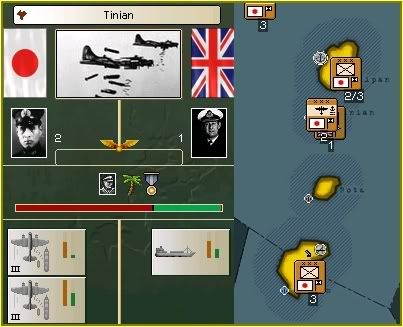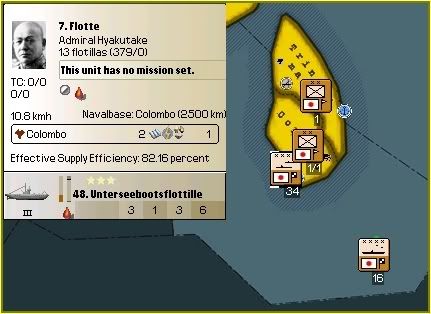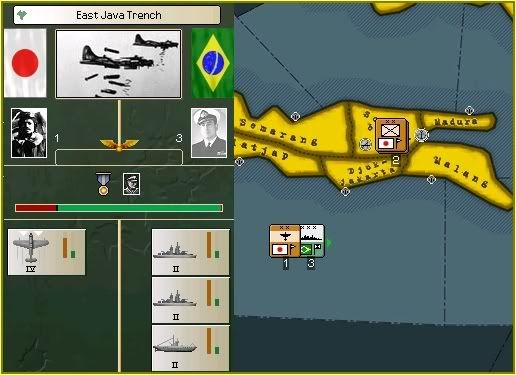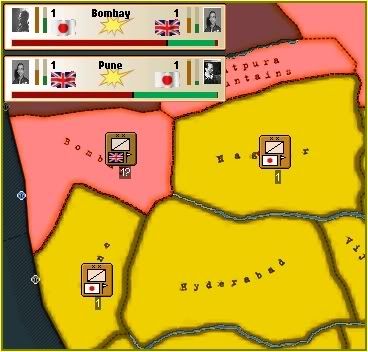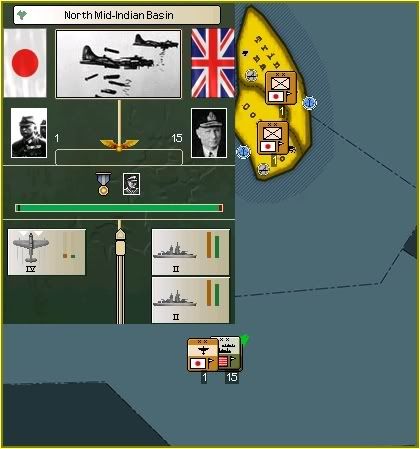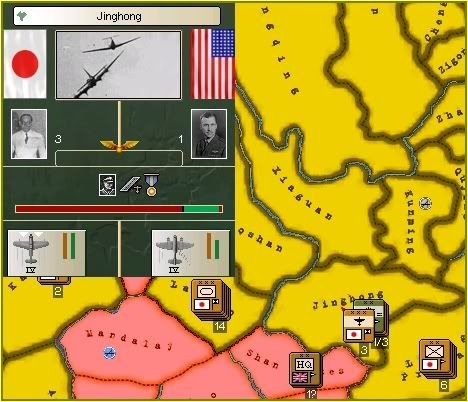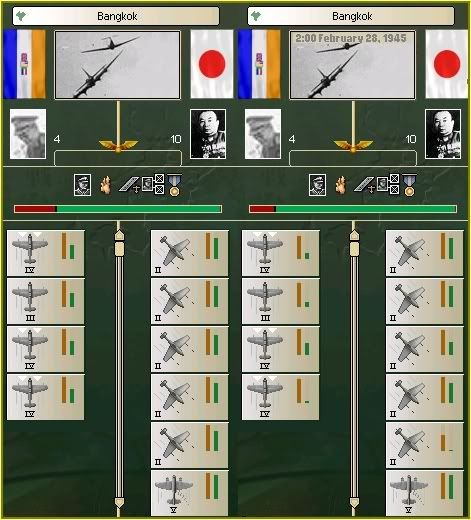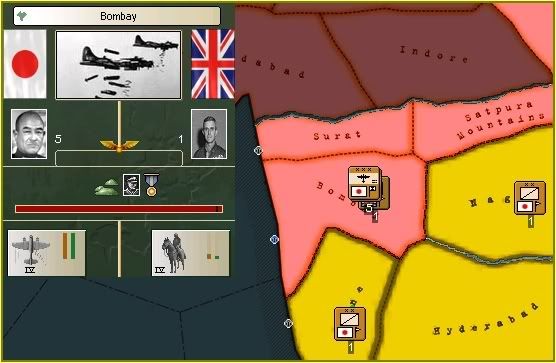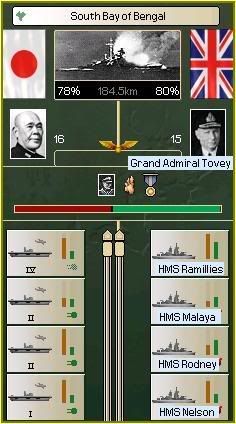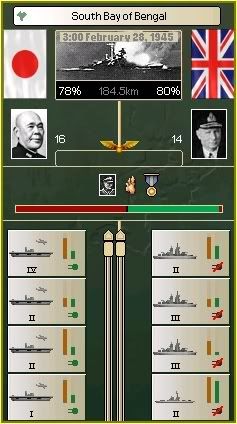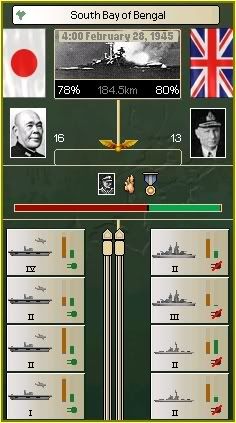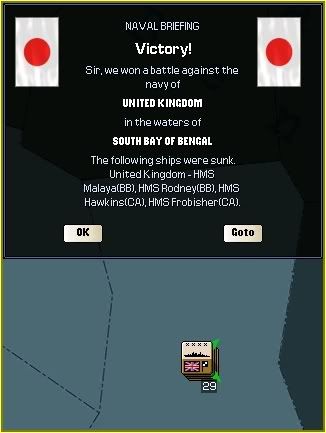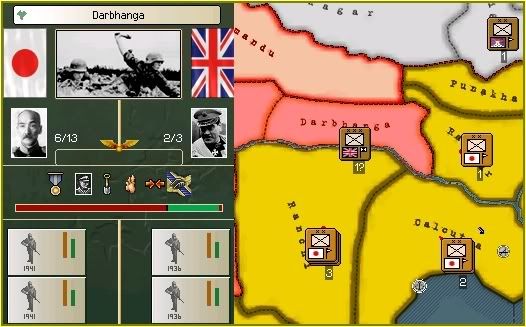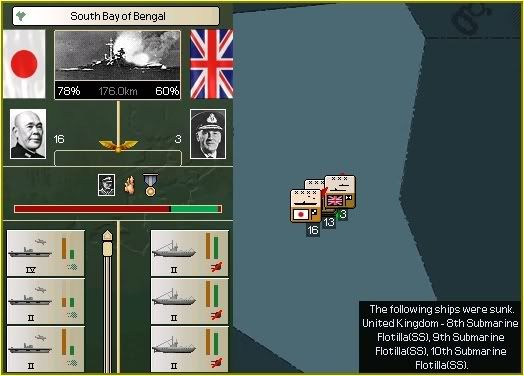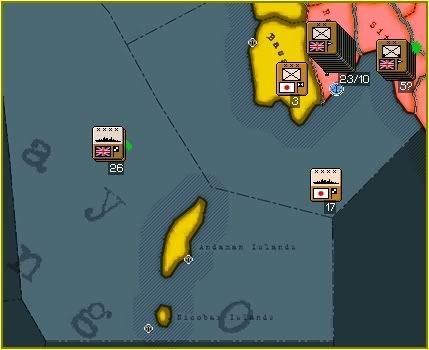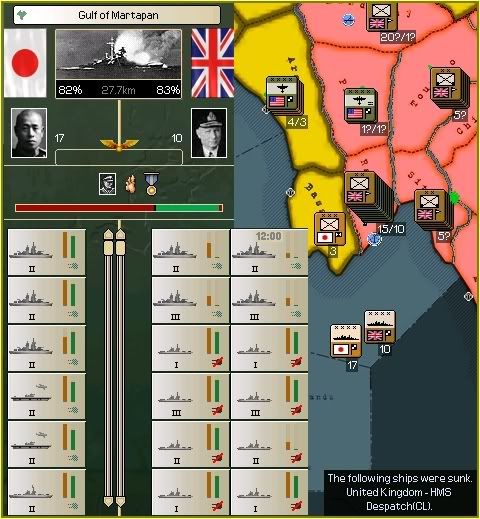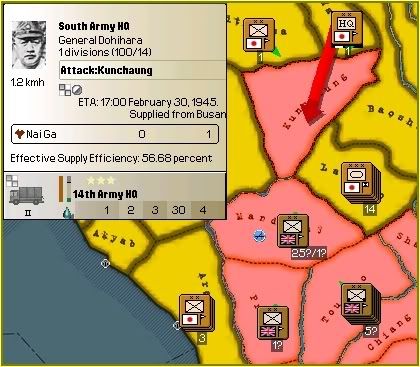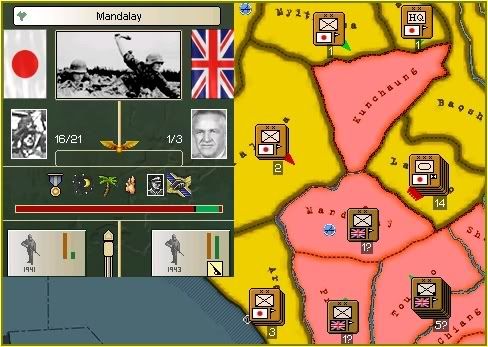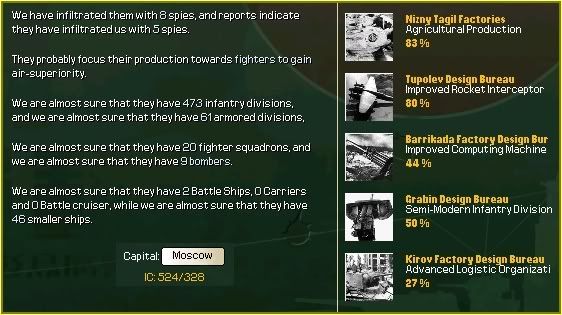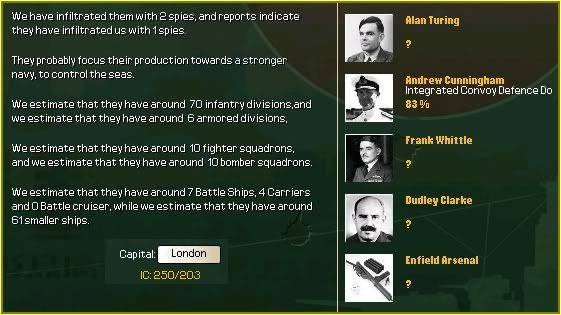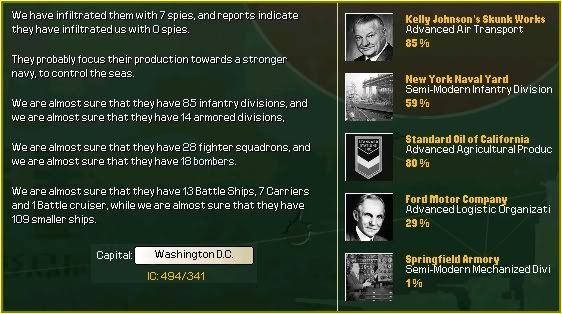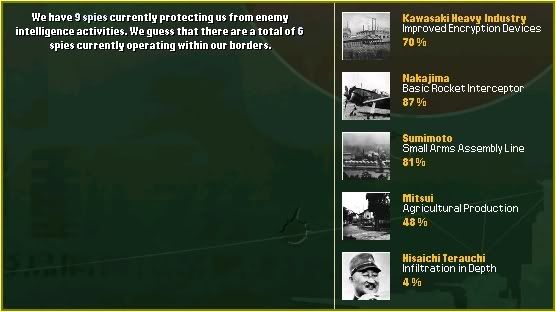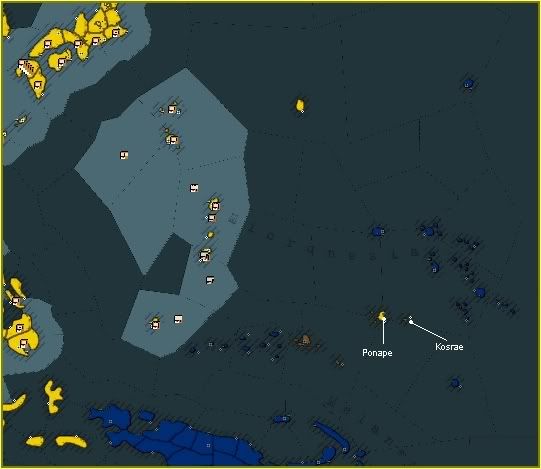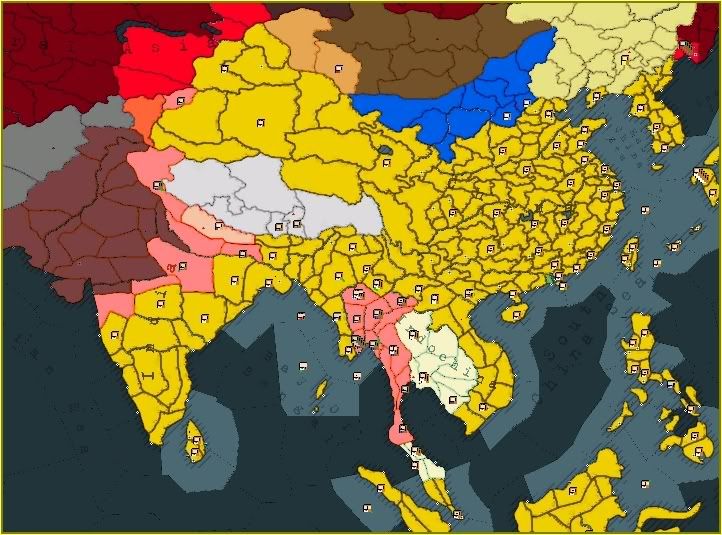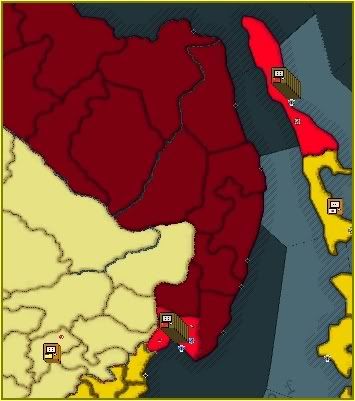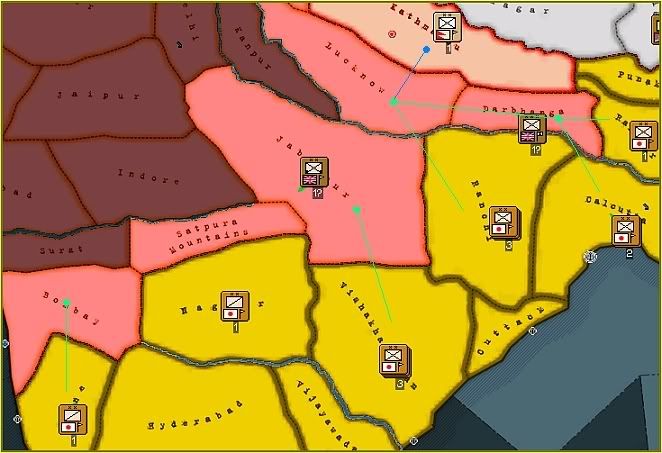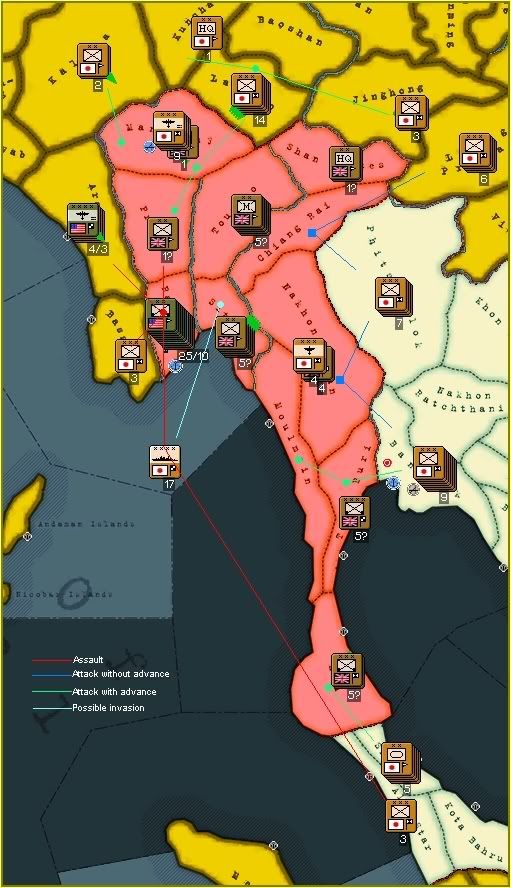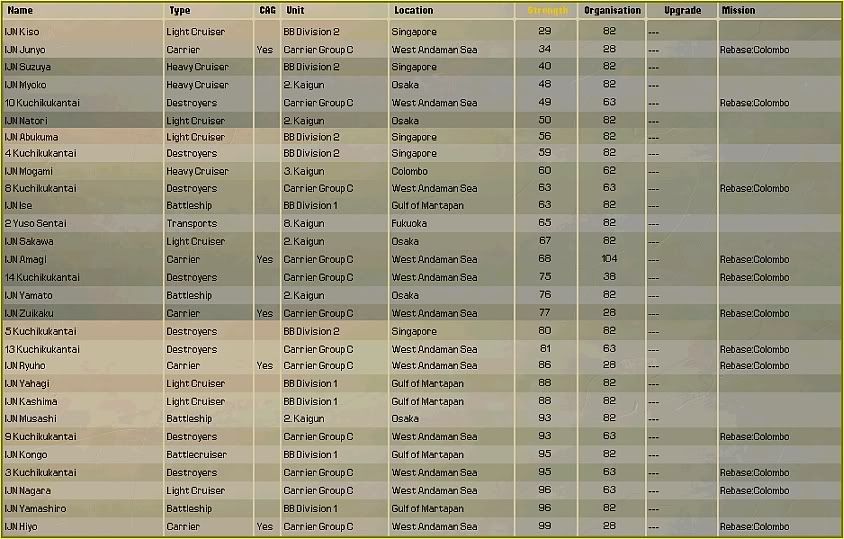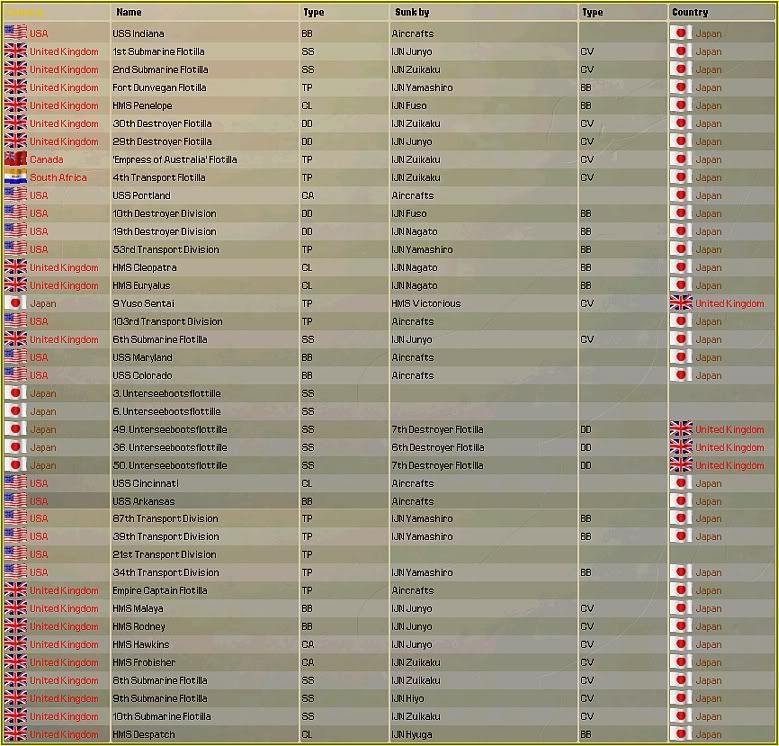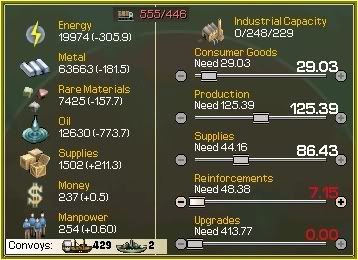Operation Dilemma
15
0600 February 25th 1945.
BB Division 1 Flagship. IJN Yamashiro, Gulf of Martapan.
The single British division guarding the island of Tinian in the Marianas was stuck unless the Allies tried to remove it by sea.
Genda targetted the Transport Flotilla in the harbour to ensure that it stayed on the isolated island.
At 2100 hours on February 25th the final former German Submarine fleet arrived in Colombo where it would stay until repairs could be conducted to the very badly damaged vessels.
Yamamoto learned of another enemy fleet operating around Indonesia. This fleet too had Battleships.
The Brazilian fleet would be given a very wide berth by all Japanese fleets.
Yamamoto's ships were called upon to dispatch another Transport Division at 0600 on the 26th. IJN Yamashiro duly obliged.
1800 February 26th 1945.
North China Army Headquarters. Jinghong, China.
The advance of the enemy cavalry division in India needed to be halted as it had attacked Amano's withdrawing division again.
This time, however, there was help close at hand in the shape of the second cavalry division in India. Not only was the attack on Pune halted but the enemy division was forced to retreat.
0200 February 27th 1945.
BB Division 1 Flagship. IJN Yamashiro, Gulf of Martapan.
One British fleet was crippled and in port in western India but there was a second at sea containing four Battleships.
Mj. General Umazu found it south of Ceylon on his last patrol mission for the time being. His squadron badly needed time to rest and replace its lost aircraft.
Yamamoto thought about his options for several minutes before deciding on a course of action. The enemy fleet, commanded by Admiral Tovey, was clearly heading in his direction and he had no wish to break his blockade. He had another fleet available to him but it was damaged. He decided to take a risk because it would put the Royal Navy completely out of action in this area.
0700 February 27th 1945.
The Skies Above Asia.
Several interceptions occured over Asia between Japanese and Allied aircraft, the first of which was above Higashikuni's headquarters in Jinghong.
The single American Tactical bomber squadron stood little chance, although it would survive. Bombers were not permitted to drop explosives on Higashinuki's now mobile headquarters.
The second could have gone extremely badly as three South African interceptor squadrons and one fighter squadron attacked the Japanese bomber forces as they took off over Bangkok. Some damage resulted for one Close Air Support squadron in particular, but the two interceptor squadrons that were routinely accompanying these bombers inflicted a large amount of damage in return.
The cavalry division in western India had made itself enough of a nuisance. The five longer ranged Tactical bombers at Higashikuni's disposal in the area dealt with the problem.
0100 February 28th 1945.
Carrier Group C Flagship. IJN Zuikaku, South Bay of Bengal.
Nagano was slightly concerned about his orders but Yamamoto had been right on most occasions of late. He would rather have stayed in port to try and repair his badly damaged Carriers but it was not to be.
The first reports began arriving just before 0100 hours and Nagano gave the orders to prepare all eight Aircraft Carriers for battle. He hoped the enemy fleet did not know he was here.
Admiral Tovey was indeed moving towards BB Division 1 but Yamamoto had ordered Nagano from Trincomalee to intercept the British fleet. All Nagano had to do now was keep the four Battleships away from his own damaged fleet.


